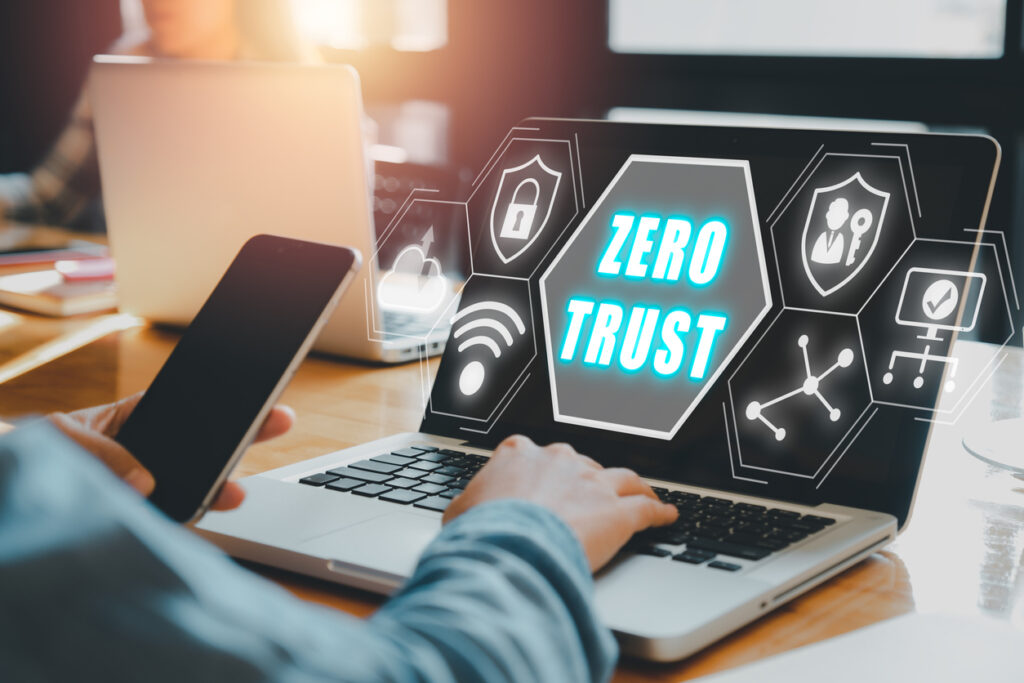In today’s hyper-connected digital landscape, traditional security models built on the assumption of trust are no longer sufficient to protect against sophisticated cyber threats. As organizations grapple with the challenges of securing their networks, data, and applications, a new paradigm has emerged: Zero Trust Security. In this comprehensive guide, we will explore the principles, benefits, and implementation of Zero Trust Security, empowering organizations to adopt a proactive and adaptive approach to cybersecurity with Netcotech’s expertise.
What is Zero Trust Security?
Zero Trust Security is a cybersecurity framework based on the principle of “never trust, always verify.” Unlike traditional perimeter-based security models that rely on implicit trust once users and devices are inside the network perimeter, Zero Trust Security operates on the assumption that threats may already exist both inside and outside the network. Therefore, every user, device, application, and data transaction must be verified and authenticated before access is granted.
Key Principles of Zero Trust Security:
- Verify Identity: Zero Trust Security requires strong authentication methods, such as multi-factor authentication (MFA) and biometric authentication, to verify the identity of users and devices attempting to access network resources.
- Least Privilege Access: Zero Trust Security follows the principle of least privilege access, granting users and devices only the minimum level of access required to perform their tasks. This limits the potential impact of security breaches and reduces the attack surface.
- Assume Breach: Zero Trust Security assumes that threats may already be present within the network, regardless of its perimeter. As a result, continuous monitoring and threat detection mechanisms are essential for identifying and mitigating security risks in real-time.
- Micro-Segmentation: Zero Trust Security employs micro-segmentation to divide the network into smaller, isolated segments or zones based on user roles, applications, and data sensitivity. This limits lateral movement and contains security incidents within specific network segments.
- Continuous Authentication and Authorization: Zero Trust Security emphasizes continuous authentication and authorization throughout the user session, ensuring that access privileges are dynamically adjusted based on user behavior, context, and risk factors.

Benefits of Zero Trust Security:
- Enhanced Security Posture: Zero Trust Security helps organizations strengthen their security posture by eliminating implicit trust and adopting a proactive, risk-based approach to cybersecurity. By verifying every user, device, and transaction, organizations can minimize the risk of unauthorized access and data breaches.
- Reduced Attack Surface: By implementing least privilege access and micro-segmentation, Zero Trust Security reduces the attack surface and limits the potential impact of security breaches. This helps organizations contain security incidents and prevent lateral movement by malicious actors.
- Improved Compliance and Regulatory Compliance: Zero Trust Security aligns with various compliance requirements and regulatory standards, such as GDPR, HIPAA, and PCI DSS, by enforcing strict access controls, data encryption, and continuous monitoring. This helps organizations achieve compliance and mitigate the risk of regulatory fines and penalties.
- Adaptability and Scalability: Zero Trust Security is adaptable and scalable, making it suitable for organizations of all sizes and industries. Whether it’s a small business or a large enterprise, Zero Trust Security can be tailored to meet the specific needs and requirements of each organization.
Implementing Zero Trust Security with Netcotech:
Implementing Zero Trust Security requires a holistic approach that encompasses people, processes, and technology. Netcotech offers comprehensive Zero Trust Security solutions and services designed to help organizations assess their current security posture, develop Zero Trust Security strategies, and implement appropriate technologies and controls. With Netcotech as your trusted partner, organizations can embark on their Zero Trust Security journey with confidence, knowing that their assets and data are protected by industry-leading cybersecurity expertise.
Conclusion:
In an era of evolving cyber threats and complex IT environments, Zero Trust Security offers a proactive and adaptive approach to cybersecurity that prioritizes verification, least privilege access, and continuous monitoring. By understanding the principles, benefits, and implementation of Zero Trust Security with Netcotech’s expertise, organizations can strengthen their security posture, reduce risk, and protect against emerging threats in the digital age. With Zero Trust Security, organizations can embark on their cybersecurity journey with confidence, knowing that they are fortified against today’s and tomorrow’s cyber threats.